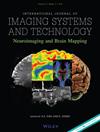Applying machine learning to screen for acute myocardial infarction-related biomarkers and immune infiltration features and validate it clinically and experimentally
IF 3
4区 计算机科学
Q2 ENGINEERING, ELECTRICAL & ELECTRONIC
引用次数: 0
Abstract
Acute myocardial infarction (AMI) has been responsible for 8.5 million deaths worldwide each year over the past decade and is the leading cause of death. It is a severe illness worldwide and can happen in multiple age categories. Despite the significant progress in fundamental and clinical studies of AMI, biomarkers for AMI development have not been adequately investigated. The present research aimed to characterize potential new biomarkers of AMI by comprehensive analysis and to explore the immune infiltration characteristics of this pathophysiological process. In this study, we identified 68 DEGs and performed gene set enrichment analysis, GO, disease oncology, and KEGG analysis, and the results suggested that several functional signaling pathways and essential genes were strongly related to the onset and progression of AMI. In addition, combining multiple algorithms, FCER1G, CLEC4D, SRGN, and SLC11A1 were determined to be prospective biomarkers of AMI and showed good diagnostic value. Immuno‐infiltration analysis suggested that neutrophils, CD8+ T cells, monocytes, and M0 macrophages might be involved in the onset and progress of AMI. In conclusion, a combined approach was employed to select biomarkers associated with AMI and to probe the critical function of immune cells in the progression of AMI. In addition, clinical studies were applied to analyze the correlation between the occurrence of AMI and lipid dysregulation.应用机器学习筛选急性心肌梗死相关生物标志物和免疫浸润特征,并进行临床和实验验证
在过去的十年里,急性心肌梗死(AMI)每年造成全球850万人死亡,是死亡的主要原因。这是一种全球性的严重疾病,可能发生在多个年龄段。尽管AMI的基础和临床研究取得了重大进展,但AMI发展的生物标志物尚未得到充分研究。本研究旨在通过综合分析来表征AMI潜在的新生物标志物,并探索该病理生理过程的免疫浸润特征。在本研究中,我们鉴定了68个DEG,并进行了基因集富集分析、GO、疾病肿瘤学和KEGG分析,结果表明,几种功能性信号通路和必需基因与AMI的发病和进展密切相关。此外,结合多种算法,FCER1G、CLEC4D、SRGN和SLC11A1被确定为AMI的前瞻性生物标志物,并显示出良好的诊断价值。免疫浸润分析表明,中性粒细胞、CD8+T细胞、单核细胞和M0巨噬细胞可能参与AMI的发生和发展。总之,采用联合方法来选择与AMI相关的生物标志物,并探索免疫细胞在AMI进展中的关键功能。此外,还应用临床研究来分析AMI的发生与脂质失调之间的相关性。
本文章由计算机程序翻译,如有差异,请以英文原文为准。
求助全文
约1分钟内获得全文
求助全文
来源期刊

International Journal of Imaging Systems and Technology
工程技术-成像科学与照相技术
CiteScore
6.90
自引率
6.10%
发文量
138
审稿时长
3 months
期刊介绍:
The International Journal of Imaging Systems and Technology (IMA) is a forum for the exchange of ideas and results relevant to imaging systems, including imaging physics and informatics. The journal covers all imaging modalities in humans and animals.
IMA accepts technically sound and scientifically rigorous research in the interdisciplinary field of imaging, including relevant algorithmic research and hardware and software development, and their applications relevant to medical research. The journal provides a platform to publish original research in structural and functional imaging.
The journal is also open to imaging studies of the human body and on animals that describe novel diagnostic imaging and analyses methods. Technical, theoretical, and clinical research in both normal and clinical populations is encouraged. Submissions describing methods, software, databases, replication studies as well as negative results are also considered.
The scope of the journal includes, but is not limited to, the following in the context of biomedical research:
Imaging and neuro-imaging modalities: structural MRI, functional MRI, PET, SPECT, CT, ultrasound, EEG, MEG, NIRS etc.;
Neuromodulation and brain stimulation techniques such as TMS and tDCS;
Software and hardware for imaging, especially related to human and animal health;
Image segmentation in normal and clinical populations;
Pattern analysis and classification using machine learning techniques;
Computational modeling and analysis;
Brain connectivity and connectomics;
Systems-level characterization of brain function;
Neural networks and neurorobotics;
Computer vision, based on human/animal physiology;
Brain-computer interface (BCI) technology;
Big data, databasing and data mining.
 求助内容:
求助内容: 应助结果提醒方式:
应助结果提醒方式:


